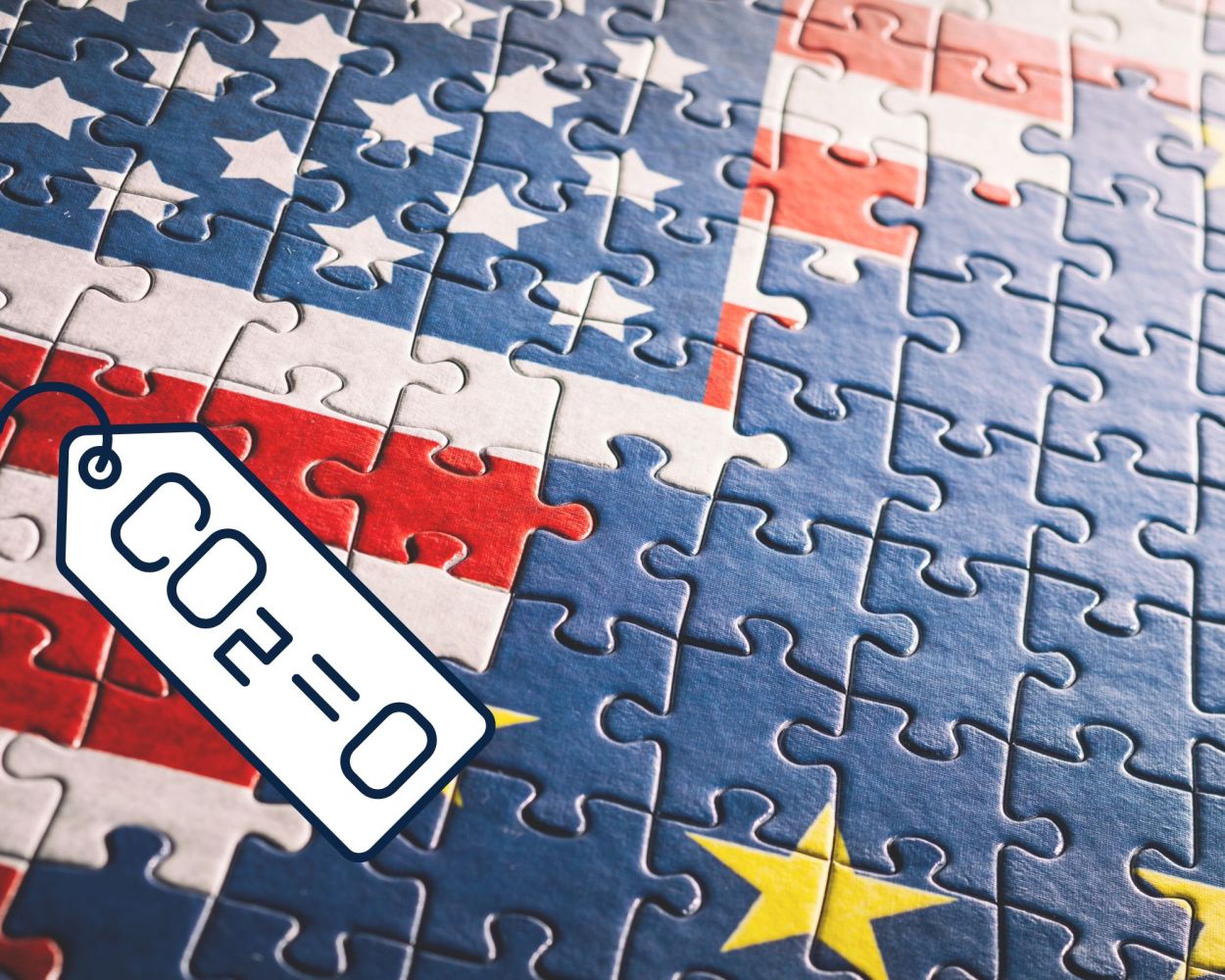The US Inflation Reduction Act (IRA) puts the EU in an uncomfortable position. At long last, the Americans pass legislation that, arguably, constitutes a federal climate policy.
But the road taken by the US is different from the EU’s. The world’s premier capitalist powerhouse is taking the path of state intervention through subsidisation and industrial policy, under the guise of fiscal policy.
Can the EU really object to the world’s largest economy finally taking concrete steps to reduce emissions? No, but the discomfort with the US approach is evident in renewed calls by France and Germany to reignite EU industrial policy. A joint statement by Bruno Le Maire and Robert Habeck calls ‘for a renewed impetus in European industrial policy’, and refers to the IRA as a ‘challenge’ in need of a ‘closely coordinated European approach’.
It’s not the first time that France and Germany have tried to push EU industrial policy into the fast lane. Ahead of the Von der Leyen Commission, they also published a ‘manifesto’ aimed at supporting European champions, by relaxing the approach to merger control (having in mind the blocked Siemens-Alstom merger).
This time, rather than traditional competition policy, it’s EU state aid in the spotlight. But more state aid may be difficult, not to mention that the EU already supports industry and low-carbon technology in various other ways.
Rather, it should strengthen other policies, including its emissions trading system (ETS), while working to revitalise multilateral institutions such as the WTO.
Why the EU worries about the IRA
The IRA comprises vast amounts of tax credits for low-carbon investments, amounting to up to USD 360 billion, including 60 billion for manufacturing and industry (the type of sectors where trade plays an important role).
The tax credits offered through the IRA are a powerful incentive. They provide a direct revenue stream immediately improving the investment case for certain low-carbon technologies, such as carbon capture and storage (CCS) and hydrogen.
The subsequent response of some European companies is a politician’s nightmare – the threat to shift investment to the US, as has been the case with Swedish battery producer Northvolt and chemical producer BASF.
For a long time, EU climate policy has been influenced by the risk of carbon leakage – including producers moving to other regions due to high EU carbon costs. In fact, the EU continues to hand out free ETS allowances that are worth the IRA’s ‘hundreds of billions’ headline figures.
There is though scant evidence for carbon leakage – arguably in part due to the EU successfully mitigating the risk. But it is precisely a competitor’s introduction of serious climate policy action that raises the spectre of production/investment leakage.
What the IRA calls tax credits the EU calls state aid. State aid is considered incompatible with the internal market, unless extenuating circumstances apply (such as investments contributing to common EU policy goals, including climate). EU state aid control is considered a strength precisely because it can prevent an inefficient subsidy race between the Member States.
However, the challenge of the IRA is of course external to the EU’s internal market.
Working around the rules
For common policy goals, the EU has created Important Projects of Common European Interests (IPCEI), which already exist for batteries and hydrogen. IPCEI are supposed to coordinate and streamline Member State investments, but still depend on individual Member States to commit fiscal resources.
The procedural dimension of state aid control also poses challenges. When designing national aid measures, including industrial policy, Member States need to in principle notify the European Commission, although it can always claim that a measure isn’t aid and therefore doesn’t need to be notified.
An example here is CCS infrastructure. Some countries design their measure with the block exemption for aid to industry in mind, thus avoiding the need for notification. This limits though the amount of funding that may be granted for infrastructure projects. While some cases of 100 % funding may also be compatible with the internal market, lengthy approval processes may deter Member States from attempting them.
With Covid-19 and the energy crisis, this dilemma is even more acute as the pandemic led to a general relaxation of the state aid regime. Member States could try to claim a measure is really a recovery measure or energy costs-relief. In any case, with the number of state aid measures growing, so too should the Commission’s capacity to assess and approve such measures.
Don’t try to imitate the IRA
A possible answer to the constraints of state aid-driven industrial policy might be to adopt more measures at EU level. But beyond Treaty constraints, EU budget constraints loom even larger. An agreement on a new vast funding package to challenge the IRA’s massive war chest is highly unlikely.
But the EU should not be dragged into an intensifying subsidy race – least of all with a country with such deep pockets and the world’s reserve currency. There is also the risk of throwing subsidies towards sectors that may inevitably shift their production anyway in a low-carbon world.
Sectors that need vast amounts of clean electricity and clean hydrogen will go where those resources will be cheapest – not always likely to be the EU. This doesn’t mean that the EU will deindustrialise as specialised downstream industries may well maintain their EU presence as they are part of well-integrated value chains.
It’s right for the EU to object to protectionist elements in the IRA. Nevertheless, the EU should remember that the real boon of industrial policy for low-carbon technologies lies in the cost reductions realised which benefit every country and global climate ambition first and foremost. Nor should it forget that its own ETS and Innovation Fund is worth hundreds of billions in auction revenues and emissions permits.
The EU and US should use the current tensions to revitalise the WTO – including by staffing its appellate body fully. For the US, the EU’s CBAM may have unwelcome protectionist elements, while the EU is similarly concerned about the IRA’s ‘buy-local’ requirements.
Rather than attacking each other’s policies – both supporting essential industrial emissions reductions – the EU and US should seek ways to cooperate, such as through clubs or alliances, that can further strengthen green investment on both sides of the Atlantic.


